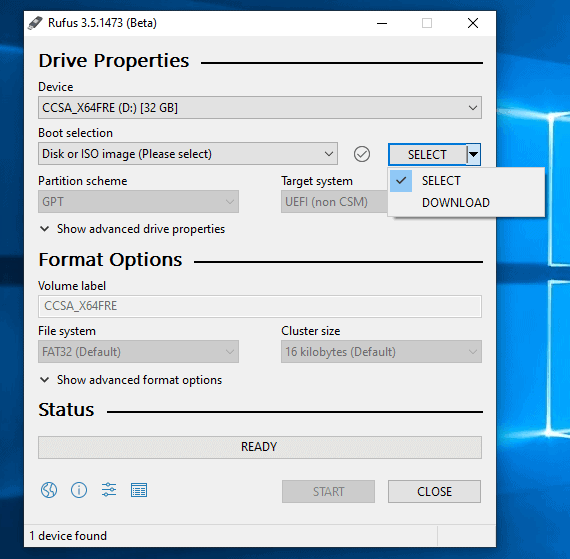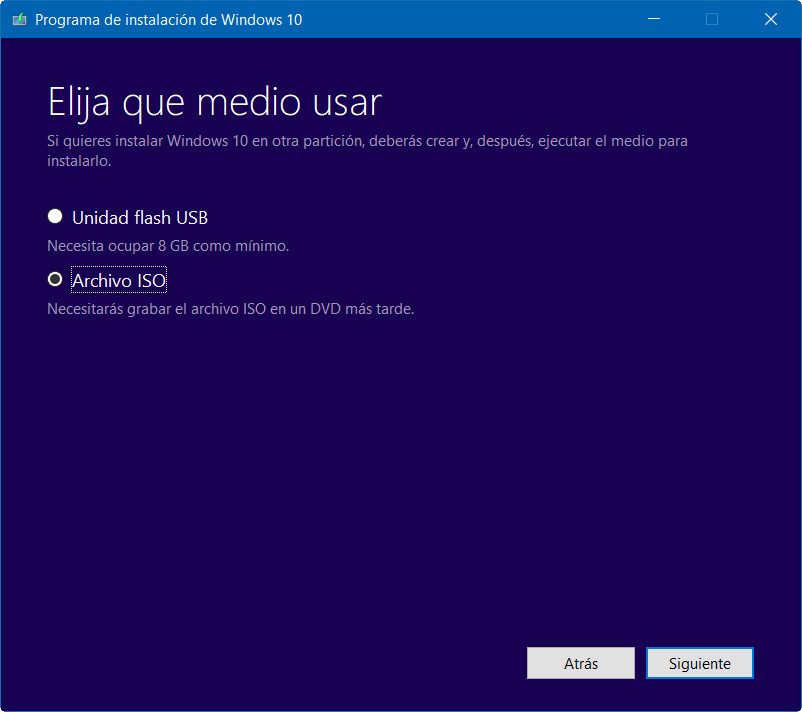
- #RUFUS WINDOWS TO GO HOW TO#
- #RUFUS WINDOWS TO GO LICENSE KEY#
- #RUFUS WINDOWS TO GO INSTALL#
- #RUFUS WINDOWS TO GO WINDOWS 10#
- #RUFUS WINDOWS TO GO PORTABLE#
Look at supported Windows To Go drives below as these are the only official drives supported by Microsoft. Ideally and SSD with minimum 512mb transfer R/W rate for decent data transfer.
#RUFUS WINDOWS TO GO WINDOWS 10#
#RUFUS WINDOWS TO GO HOW TO#
This article is written to show you how to run Windows on a Mac that doesn’t have enough local storage by working around issue using an external USB drive and Windows To Go product to create image. The current SSD on the Mac doesn’t have enough space so I need to run Windows via an external USB drive for business purposes or testing. Like many of you, I purchased a Mac with 256GB of storage and need to run Windows.

Also useful is the option to create a log file in case something goes wrong.App Dev Manager Al Mata shares tips on running Windows on a Mac using Windows to Go. Like with the Windows 7 USB tool, you can choose an ISO image of an OS that you want to copy to the drive. USB sticks are more reliable now than they were a few years ago, but if you bought a super-cheap flash drive, it can’t be wrong to let Rufus check it. The option to check the flash drive for bad blocks is useful. However, for creating a Windows 8 boot media, you won’t need it. If you want to use every bit of your flash drive, you could change that. In most cases, the default cluster size will do. Rufus also supports exFAT, which you can use if you think you will hit the file size limit of FAT32.
#RUFUS WINDOWS TO GO INSTALL#
If you intend to install Windows To Go and use Rufus just to format the flash drive, NTFS is the right choice. NTFS on a USB stick only makes sense anyway if you intend to configure permissions on files and folders. If you have a new computer that supports the BIOS successor UEFI, I recommend choosing the last option if you want to ensure that Windows 8 will make use of the UEFI features.įor the file system, you should select FAT32 and not NTFS in that case. You can choose between the MBR partition scheme for BIOS or UEFI computers, the MBR partition scheme for UEFI computers, and the GPT partition scheme for UEFI computers. Rufus allows you to select the partition scheme and the target system type. Considering that the tool only has to format a flash drive and copy some files to it, I don’t understand why Microsoft requires the Windows 7 USB tool to be installed.
#RUFUS WINDOWS TO GO PORTABLE#
In addition, it offers a few features that the IT pro will like.įirst of all, it is a portable application and therefore needs no installation. Thus far, it mastered every flash drive I tried. I think Microsoft should no longer sell Windows on DVDs and instead offer USB setup sticks and bare metal cloud installations.Īnyway, I played with the free Rufus alternative to the Windows 7 USB tool, and it appears to be more reliable. People expect that they can just use a product when they paid for it without the need to fiddle around with diskpart. 😉 I believe forcing end users to download an unreliable tool to create install media is an anachronism. So you see what a Microsoft fan boy I am. I suppose the majority of customers would just have returned the Windows 8 DVD and bought an iPa(i)d or Android tablet instead. They didn’t know how to do that and I ended up doing it myself in the shop. Since the Windows 8 package only came with a DVD and I didn’t bring a DVD drive, I had to go back to the shop and ask them to create a USB boot stick for me.
#RUFUS WINDOWS TO GO LICENSE KEY#
It appears that, depending on the country, the license key and the Windows 8 setup have to fit together.

When I tried to install the OS with my USB stick, the setup complained that the license key doesn’t work. I recently bought Windows 8 in the Philippines. I’d like to take this opportunity to add one more annoyance that might be a bit off topic because I am supposed to review Rufus here. If you run into problems even before you can create the installation media, then then you are likely somewhat prejudiced against a new operating system that was made for tablet PCs and Ultrabooks for which a setup DVD is relatively useless. Considering that more and more PCs no longer feature DVD drives, this could be a major reason why Windows 8 user satisfaction is not always as high as Microsoft hopes.


 0 kommentar(er)
0 kommentar(er)
